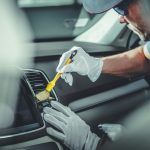The Future of Car Safety: Breakthrough Technologies Saving Lives
The Pursuit of Zero Accidents
Achieving zero accidents is becoming an essential goal for the automotive industry, focusing on reducing road accidents and minimizing human error. Technological advancements and strategic campaigns aim to transform road safety, offering a promising direction toward safer travel.
Initiatives and Campaigns
Various global initiatives strive to achieve the ambitious goal of zero accidents on the road. Prominent among these is Vision Zero, a multinational program launched in Sweden and now adopted by numerous countries. It seeks to align road safety measures with human behavior to reduce fatal accidents effectively. Promoting a safer infrastructure and encouraging responsible driving behavior are vital components of this initiative.
Campaigns addressing human error are pivotal, as they aim to educate drivers on safe driving practices. The integration of vehicle technology, such as advanced driver-assistance systems, also plays a crucial role. These systems can detect potential hazards and assist in accident prevention by automating certain driving functions, significantly reducing the likelihood of human-induced errors.
Challenges and Opportunities
The journey to achieving zero accidents faces numerous challenges, primarily linked to human error and infrastructure inadequacies. One major obstacle is ensuring the public’s adaptability to new technologies and systems aimed at enhancing road safety. Drivers’ reluctance to embrace innovation can hinder the effectiveness of these systems, limiting their impact in reducing road accidents.
However, these challenges present opportunities for improvement and growth within the industry. Further investment in research and development can lead to the creation of more intuitive technologies that seamlessly integrate with current systems. Collaboration between governments, automotive manufacturers, and tech companies is essential to develop comprehensive strategies addressing both infrastructure and human factors in road safety.
Industry Perspectives and Safety Standards
In the fast-paced evolution of automotive safety, regulatory bodies ensure vehicles meet high standards, while companies like Toyota develop technologies that actively prevent accidents. These efforts are crucial in reducing injuries and fatalities on the road.
Regulatory Bodies and Safety Protocols
Regulatory bodies play a pivotal role in establishing safety protocols for the automotive industry. Organizations such as the National Highway Traffic Safety Administration (NHTSA) in the United States and the European New Car Assessment Programme (Euro NCAP) are at the forefront of these efforts. They develop stringent guidelines requiring manufacturers to integrate advanced safety features. Crash testing and rigorous assessments measure compliance with safety standards.
Manufacturers are encouraged to continually innovate to meet these evolving guidelines. The enforcement of these protocols ensures that vehicles not only protect occupants during a collision but also actively work to prevent accidents. The collaboration between regulatory agencies and automotive companies drives technological advancements and ensures consumer safety on the road.
Case Study: Toyota Safety Sense
Toyota Safety Sense exemplifies the company’s commitment to enhancing automotive safety. This suite of technologies includes features such as pre-collision systems, lane departure alerts, and adaptive cruise control. Each is designed to assist drivers in avoiding accidents and mitigate the impact when unavoidable.
The evolution of Toyota Safety Sense demonstrates the integration of advanced sensors and algorithms to effectively monitor surroundings and predict possible hazards. By prioritizing these systems, Toyota enhances driver confidence and protects passengers. This case study illustrates how automotive companies can integrate safety innovations that align with industry standards and regulatory expectations, offering consumers peace of mind and a safer driving experience.



